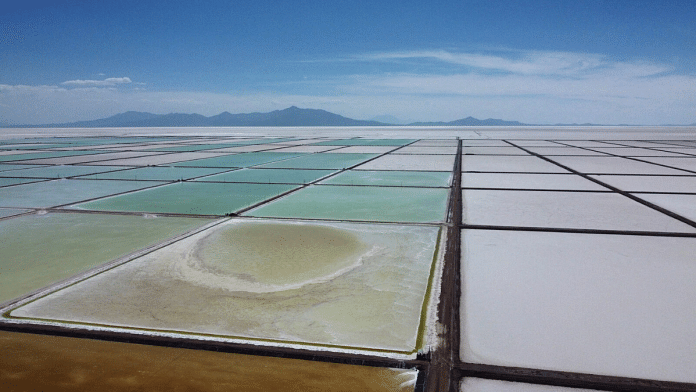The era of “big oil” has passed its zenith; welcome to the era of “big shovels“. Critical minerals are the new staple of the international economy, and governments are fast realizing that they risk economic and strategic vulnerability without them.
The transition to renewable energy, digitalization of the economy and pressure to keep apace with developments in cutting-edge technology all hinge on a select few minerals (lithium, cobalt, copper, graphite, nickel and rare earths are commonly understood as the “big six”. However, others such as zinc and manganese can also be considered). It is essential that critical mineral strategies are implemented in a manner that promotes international cooperation while minimizing fragmentation due to geopolitical rivalry.
The minerals trilemma
When it comes to devising mineral strategies, policy-makers face a trilemma in balancing competing priorities:
- Security: Ensuring a reliable supply of critical minerals and strategic autonomy.
- Cost: The affordability and equity of minerals and resources.
- Sustainability: Promoting environmentally and socially sustainable extraction and use.
Striking a balance between them is vital. Countries must not let environmental priorities go by the wayside in the name of national security. Similarly, they need to ensure that cheap minerals do not cause or exacerbate harmful mining and labour practices.
Take, for example, electricity production. Fossil fuels remain a cheap source of energy, yet the carbon emissions they produce have negative implications for sustainability. They also pose security challenges when there is a dependency on belligerent suppliers. The conflict in Ukraine has forced many European countries to reckon with the strategic implications of their dependence on Russian hydrocarbons.
Transitioning to renewable energy offers a solution to issues of both security and sustainability for European countries; however, the associated cost in the short term is likely to remain high. The supply chains of the critical minerals required to drive the transition to green energy are complex and less mature than those of fossil fuels. Moreover, there is great uncertainty regarding the quantities of critical minerals needed for net-zero carbon targets. Recent estimates from the International Energy Agency based on national climate goals suggest that demand for critical minerals will quadruple by 2040.
Additionally, the environmental cost of critical mineral extraction brings into question the viability of such a transition. Vlado Vivoda from the Rabdan Academy education institute points out: “There are simply not enough [critical minerals] out there if we are going to produce at leading environmental and social standards.”
Fragmentation or collaboration?
To complicate matters further, countries are competing for access to critical minerals. Over the past three years, hundreds of national policies addressing the resilience and production of critical minerals have been enacted. However, many of these policies are not multilateral in scope and could encourage geopolitical fragmentation.
With the increased strategic competition between large powers such as the US and China, along with strategies such as “decoupling”, “de-risking”, “friendshoring” and “onshoring”, there is a risk that the race to secure critical minerals could lead to a tragedy of the commons wherein competing political blocs exploit scarce resources and overlook the environmental costs.
Such a scenario must be avoided. Instead, international cooperation needs to be prioritized to ensure long-term availability of critical minerals. As Stephen Scalet from Trends Research & Advisory emphasizes, the two forces that will allow for this are a global convener on critical minerals and greater knowledge production from thinktanks, universities and industry. Collaborating to identify critical minerals and their supply chains is a crucial first step in engaging in meaningful international collaboration.
Centring developing countries
Any truly international strategy addressing critical minerals must place the interests of developing countries at its core. This is essential partly because a significant portion of critical minerals is found in developing economies (such as sub-Saharan Africa, which holds 30% of the world’s mineral reserves, with the Democratic Republic of the Congo alone accounting for 70% of cobalt supplies). Also, the interests of these countries risk being overshadowed by the geostrategic and economic priorities of the developed world.
This raises important questions about how “critical” these minerals are. Consider that over 80% of lithium projects and more than half of nickel and copper projects are found within indigenous peoples’ lands. The extraction of these resources could lead to displacement of local populations and destruction of natural ecosystems. According to Professor Sophia Kalantzakos, some producing countries face a huge dilemma: “Is their water more important than producing lithium for world markets? To make this a just transition, the developing world cannot become an enormous extraction site serving the interests of industrial nations. This is why implementing ESG standards is crucial, and protecting fragile ecosystems and the livelihoods of those living there is essential.”
As policy-makers devise national critical mineral strategies, there is a window of opportunity to lay the foundation for an international framework that will allow us to build a more sustainable, equitable and secure future. Only by cooperating will countries be able to balance the competing priorities of security, affordability and sustainability.
Sophia Kalantzakos, Professor at New York University, Αbu Dhabi, Stephen Scalet, Scientific Advisor at Trends Research & Advisory, and Vlado Vivoda, Associate Professor at Rabdan Academy, also contributed to this piece.
This article first appeared in the World Economic Forum. Read the original piece here.
Also read: Only 2.56% of 10,000 MW decentralised solar power target achieved under PM-KUSUM in 5 years






